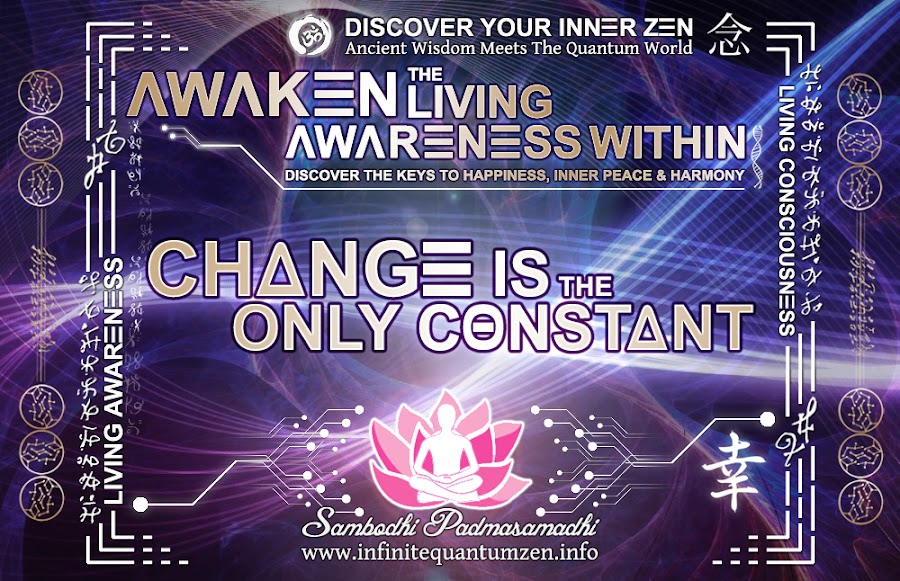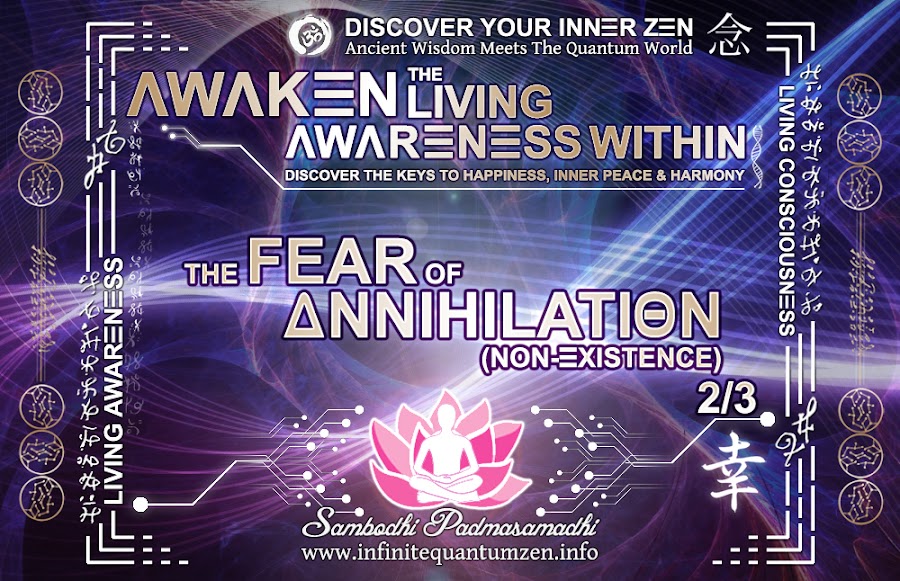 |
| ~ ∞ ~ The Mystery of Consciousness 2/2 - Awaken the Living Awareness Within ~ ∞ ~ |
By virtue of the aforementioned with regard to the nature of consciousness, one can pose a question: Do animals have consciousness? Do plants? To which the answer can be given: as the nature of consciousness is very much subjective, it can truly be known only through the aforementioned methods, you see?
In so doing, one can arrive at the following conclusion: all living things have consciousness, and are inseparably linked to all other living things in this Great Cosmic Web of Life; even plants have consciousness – plant’s knowing of where to grow and how to turn to the light is evidence of this.
Every living thing lives within the continuous cycle of birth and death where the remains of one become the nutrients for the other – nothing is ever wasted, everything just transforms into different forms at various times; everything shifts between different levels of existence or consciousness according to its vibrational frequency or awareness, you see?
Furthermore, upon deeper examination, one ultimately finds that inanimate objects are energy – like anything else, and contain trace amounts of consciousness, as all energy comes from a source of consciousness, you see? This understanding not only unites everything that happens in the visible outer world, but it also links the inner subjective world to the outer world.
All things – both seen and unseen, are bound together by cause and effect, which goes on to say that nothing can exist in absolute independence of other things or arise of its own accord; everything in the world comes into existence in response to causes and conditions – meaning that all beings and phenomena exist or occur only because of their relationship with other things. Therefore, one can say that all things – both seen and unseen, share consciousness. You see, in a completely interconnected universe, consciousness anywhere means consciousness everywhere.
As the whole of humanity is a single being, having a collective consciousness – the sum total of all human life, each life being a link in a chain of lives, bound together by cause and effect, different, yet the same – it would mean that we are part of, and intimately connected to, absolutely everything in the universe.
Now, if one sees the interconnected universe as a medium through which consciousness and information is communicated, shared and exchanged, they can also picture the universe as one enormously big, gigantic cell of consciousness containing all the information life needs to expand, develop and unfold.
In this respect, life, therefore, in and of itself, is one gigantic process of passing down consciousness and information. From this perspective, all of life is essentially one gigantic ocean of life, one gigantic ocean of consciousness.
Underlying this consciousness, there is awareness – through which, and by which, we become aware of consciousness. In other words, there is the content of consciousness as well as the awareness of it. In this respect, consciousness does not shine by itself – it shines by a light beyond it; this light is awareness, you see?
This is why the Buddhist likens consciousness to a lamp, which lights itself at the same time it lights up the objects around it. And so you see, awareness is like a light switch that turns on the lamp. From this, we can draw the conclusion that not only does all life have consciousness, but all life has awareness in varying degrees. More precisely, all Life is Awareness, and so it goes that to understand consciousness, one has to become more aware, you see?
Now, let us circle back to the problem with the “scientific attitude,” whose materialist approach and attempts to conceptualize consciousness is precisely what gives rise to confusion and keeps the vicious cycle alive, deepening the scientific dogma, and feeding scientism (the claim that science is the only source of knowledge; that science is the absolute and only justifiable access to the truth), which blinds us from seeing beyond self-imposed limits and illusion, preventing us from understanding consciousness.
When it comes to consciousness – our innate ability to experience or to feel – it remains a mystery to science, although many so-called “experts” have attempted to study, define and explain it. In our attempt to understand consciousness, we have chosen a stance of denial: if we cannot locate, measure, or see consciousness; if we cannot quantify or break down consciousness – it must be impossible; or at the very least – it must reside in the brain.
It is, after all, our firm belief that the mind is in the brain – so therefore also consciousness must reside in the brain, as well. Yet, ironically enough, we cannot prove it to be so. We tend to think that what we see is all there is – that there is nothing we cannot see. Even though we know this is not true, we like to pretend otherwise.
The investigation of our existence, and therefore of our sentience, of our consciousness, always seem to start with the presumption of things – the basic presumption of our being is based on the material reality. From this, the question arises: How could we ever possibly break down consciousness when it is the most concrete and fundamental of all things?
All current Western approaches for consciousness (at least all mainstream ones) are based on materialism – a philosophical stance which holds that the only thing that exists – is matter; that all things are composed of material, and all phenomena (including consciousness) are the result of material interactions. Therefore, the basic question has always been: How does something come out of nothing, and furthermore: How does consciousness arise from matter?
Scientifically oriented people often think that consciousness is an emergent biological phenomena – making no difference to physical systems; also psychologists often speak of the mind and the body as two separate entities for convenience – while many still acknowledge that they are intimately entwined.
Both have largely ignored how consciousness manifests in our existence; this has been done by assuming that brain produces consciousness – although it has never been verified. The only verifiable thing is that consciousness in human form is something that conceives, governs, constructs, and eventually becomes the activity of the body.
Some materialist scientists even believe that consciousness is nothing more than a side effect of our brain moving towards a state of entropy; this must be one of the most preposterous ideas put forward because consciousness in and of itself is concentration of awareness – which is totally opposite of what is being suggested by those materialist scientists.
When we really “tune in” to our own consciousness by using different mindfulness practices – one comes to realize that consciousness always arise from awareness – it doesn’t exist in itself; it is always relative to awareness. This is the main reason why science – as we know it today, cannot properly understand consciousness. You see, as things stand now, the so called “hard problem of consciousness” is deeply rooted in scientific materialism, which is based on the reductionist assumptions of various kinds.
This means that modern science and medicine are essentially based on the reductionist view of the material world. Therefore, it also reduces human existence to our physical existence, in much the same way it reduces reality to what can be detected through sensory experience or can be analyzed with reason – leaving no room for intuition, insight and Inner Knowing.
Due to scientific materialism, we believe and assume that all phenomena in the universe, including time and consciousness, are governed by “eternal laws,” and that all phenomena are subject to the same physical laws, which can be discovered by the means of systematic observation and experimentation. Here we should ask ourselves: Are these so called “eternal laws” of nature really set, or could it be possible that they are still evolving? Who are we to say that the laws of nature are fixed?
It doesn’t take a genius to understand that if the universe is expanding and evolving, then also the laws of nature may be evolving as well. The problem is that we are always looking for a physical explanation. Hence, it goes without saying that the known laws of physics are not only incomplete, but they are inadequate to explain the phenomenon of consciousness.
According to science, the universe is made of nothing, and we have no idea how we experience it; on top of that, we don’t exactly know where is the experience happening. Clearly, it is not happening in our brains, because the brain itself is experience in our consciousness, and our body is no different in that regard. And the amazing part is that we cannot find consciousness anywhere – we cannot touch it, taste it, smell it, hear it, find it or localize it – but we can experience it. Intriguing, isn’t it?
The ancient wisdom traditions have a simple answer to this problem: we are asking completely the wrong question. You see, “where” implies a location in space, and existence in time, and our consciousness is not in space-time. So, clearly, we would have to consider that it could be the other way around – that consciousness is fundamental, and what we experience as the mental and perceptual experience of the world is actually a modified form of consciousness.
In other words, there is only consciousness, and therefore the physical world and our mental experiences are simply modified aspects of consciousness. To stretch this even further, the entire universe is also an experience in our consciousness. This leads us to a staggering conclusion: all experience and phenomena happens in consciousness, and hence there is nowhere to go but in.
In a broader sense, this means that in regard to space and time, matter and form – there really is no space “out there,” and no universal clock “anywhere” to keep time – rather, there is but an appearance of space and time, matter and form; and thus, it is all here – within the Innerverse, residing within each and every one of us. The mind creates the appearance of separation, you see?
___
~ ॐ ~ Sambodhi Padmasamadhi ~ ∞ ~
Get the Book: Awaken the Living Awareness Within – Discover the Keys to Happiness, Inner Peace & Harmony
~ ॐ ~ Sambodhi Padmasamadhi ~ ∞ ~
Get the Book: Awaken the Living Awareness Within – Discover the Keys to Happiness, Inner Peace & Harmony
[ Click » here « to read the next part: Panpsychism – An Easy Escape From the Dilemma of Consciousness ]














